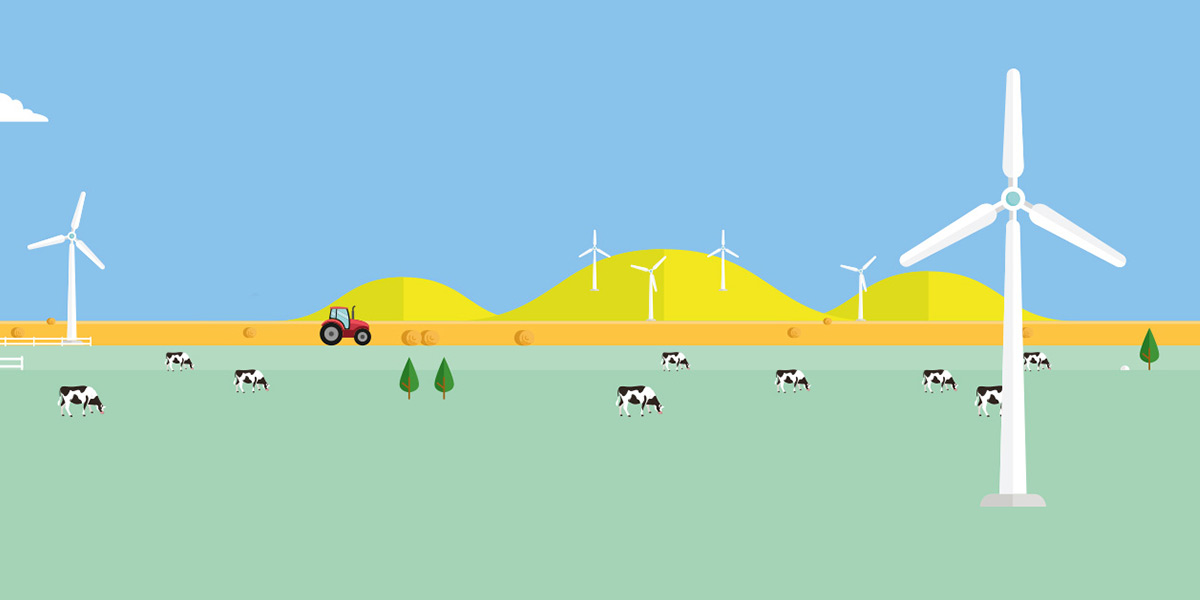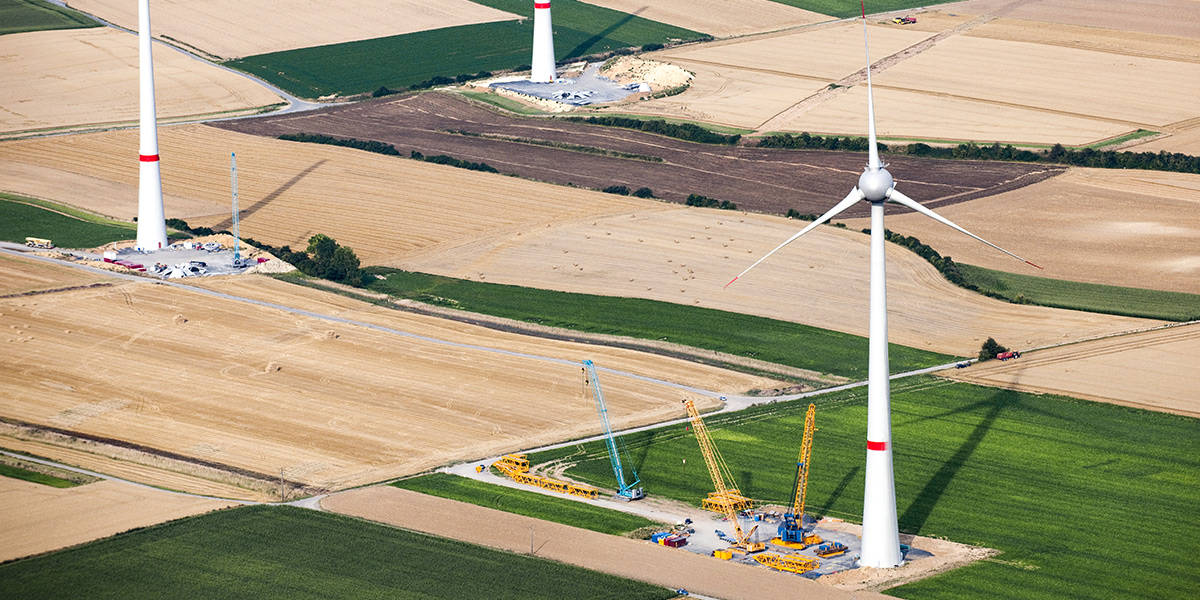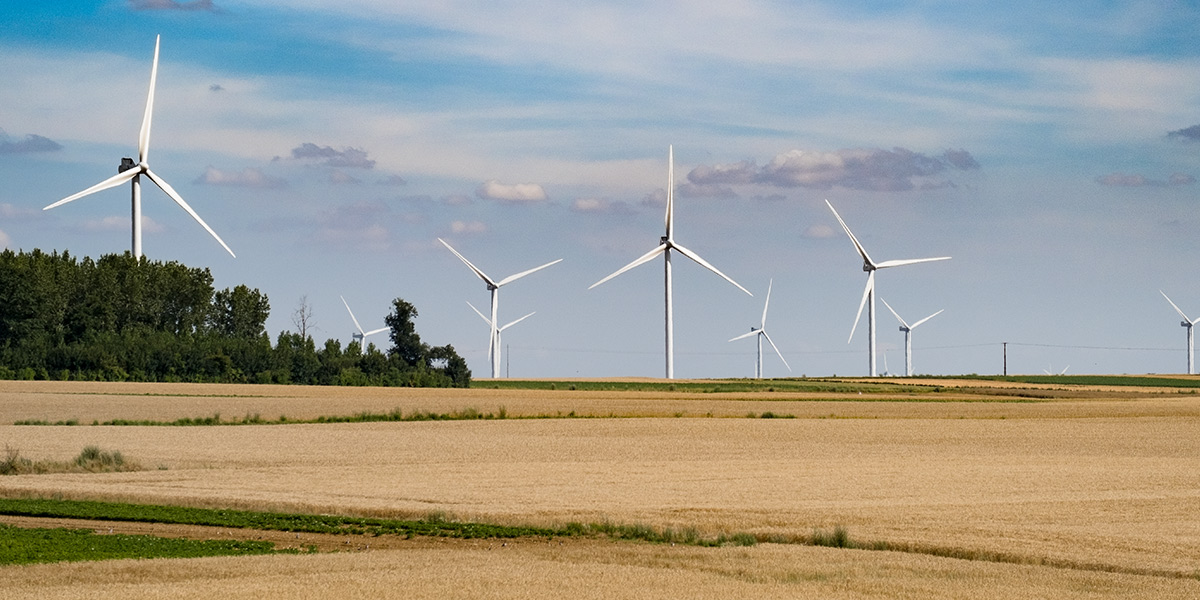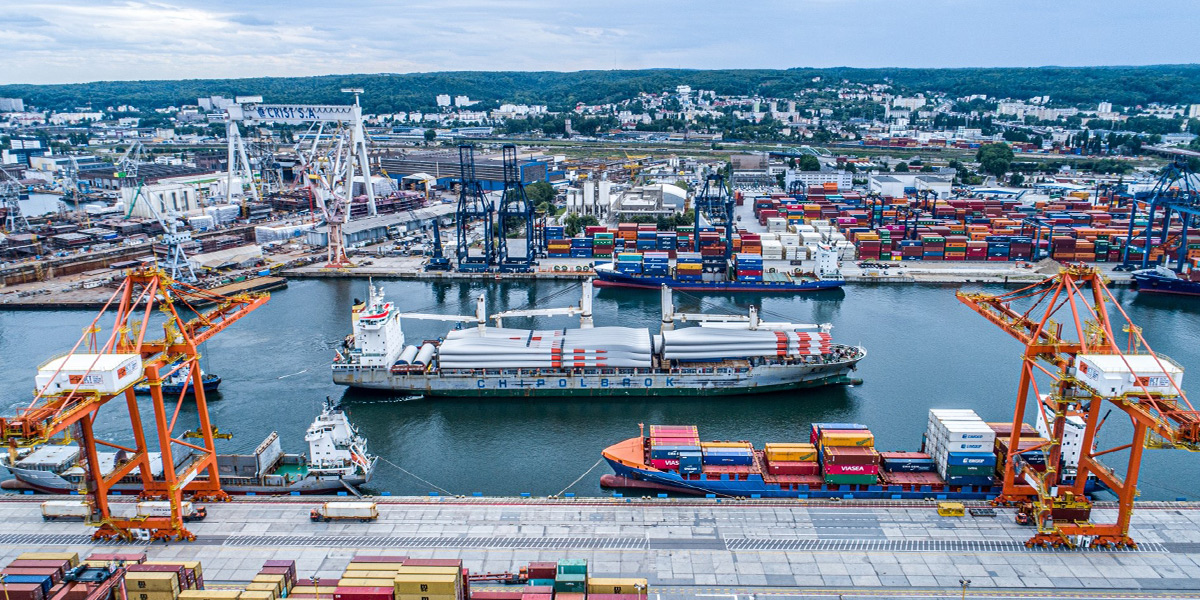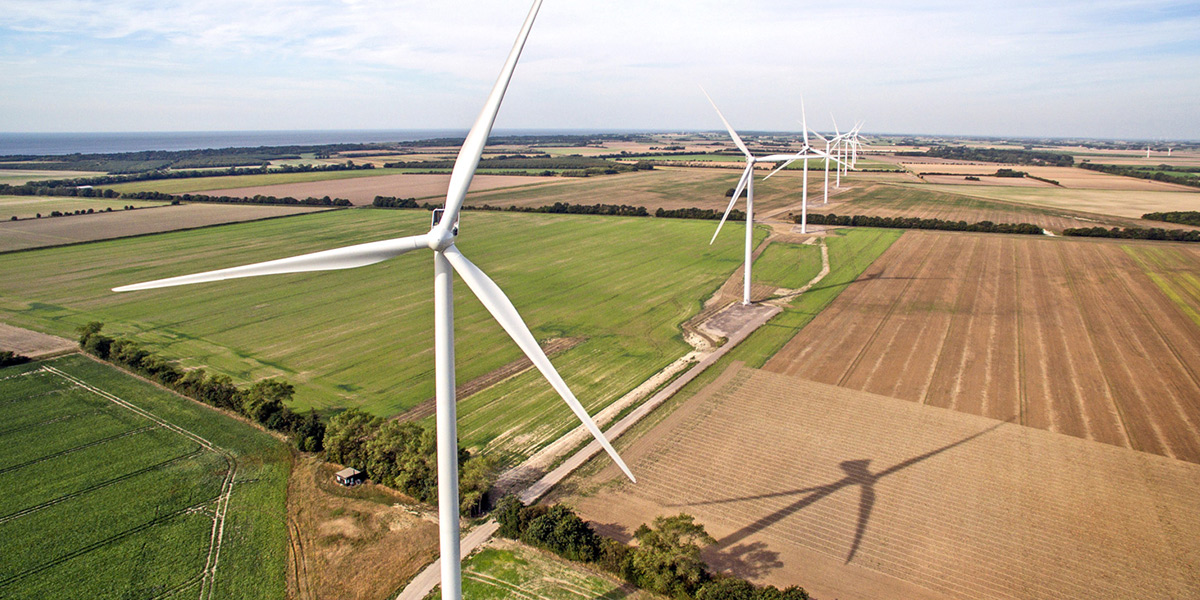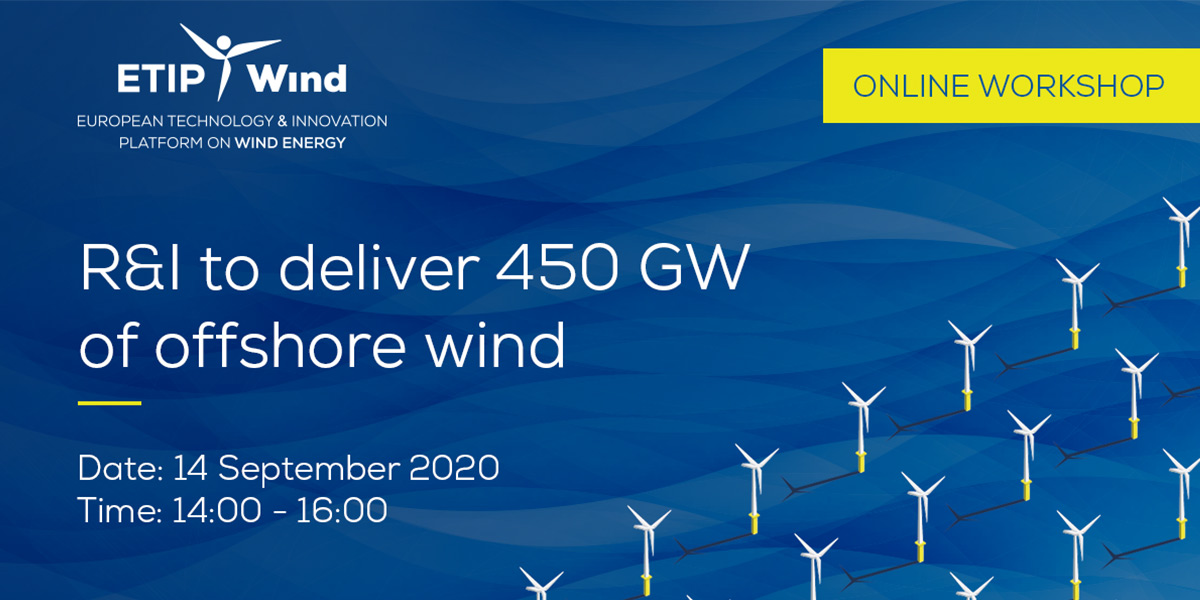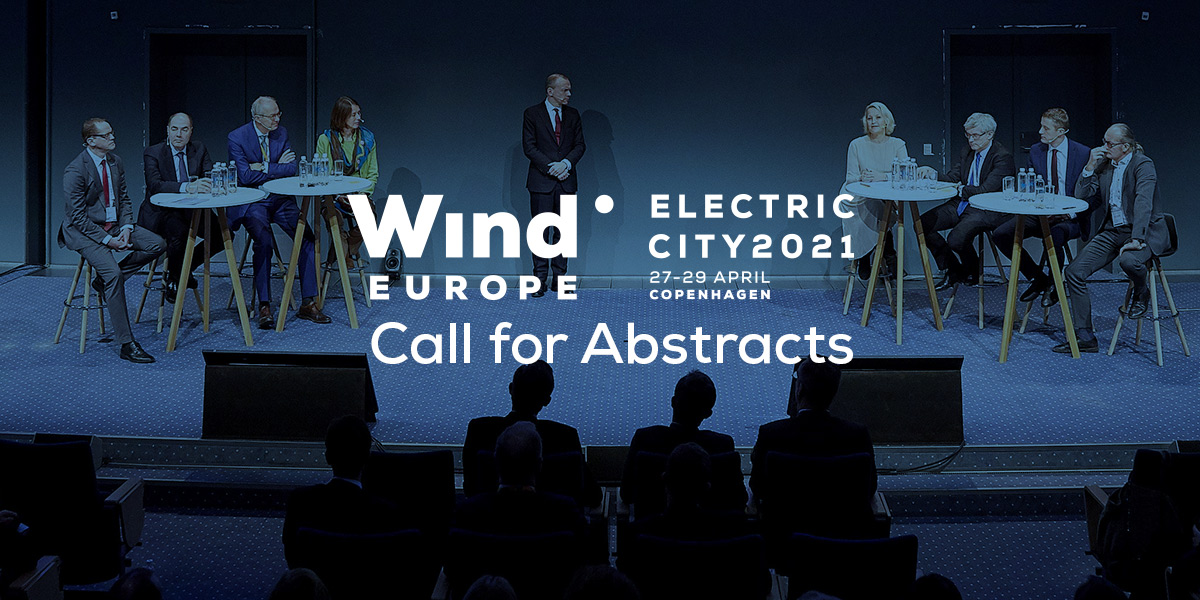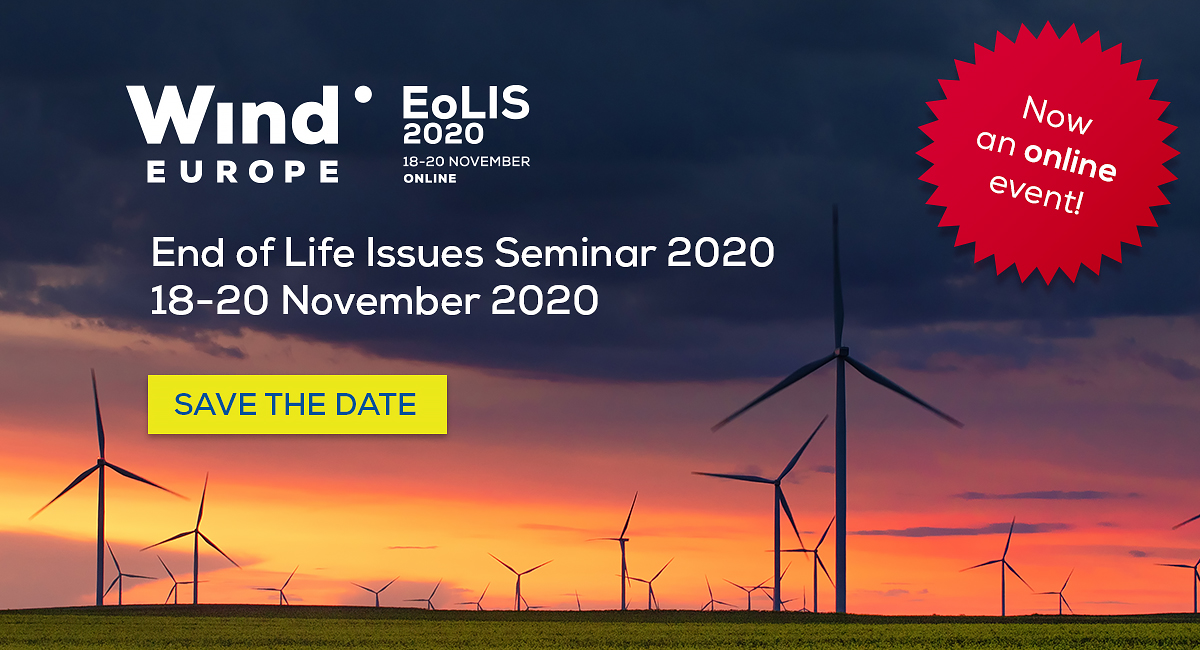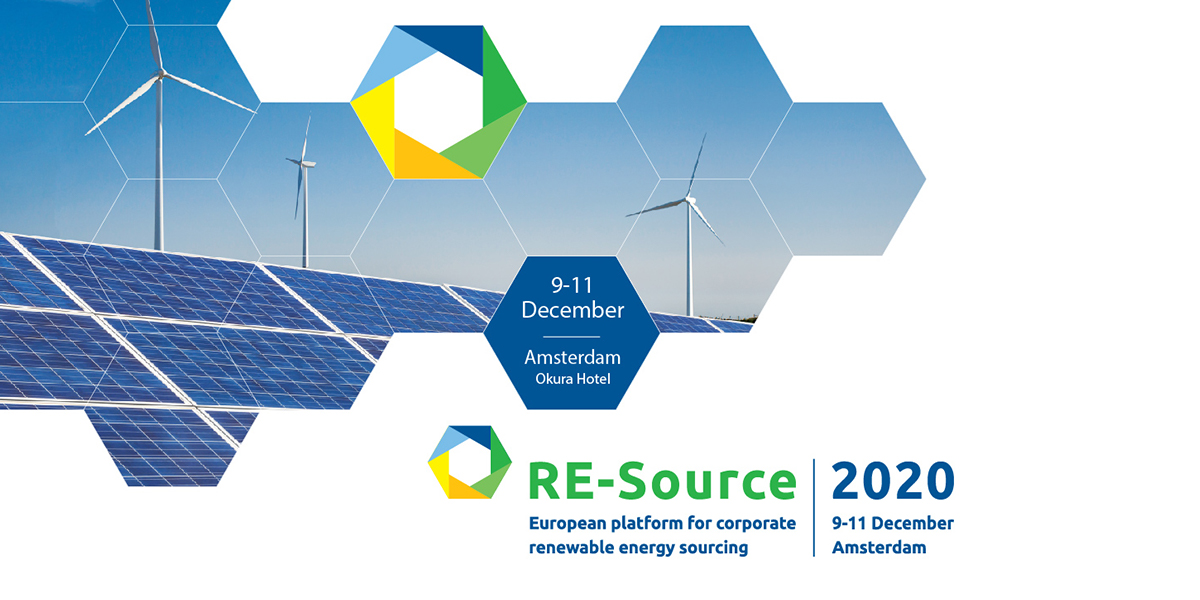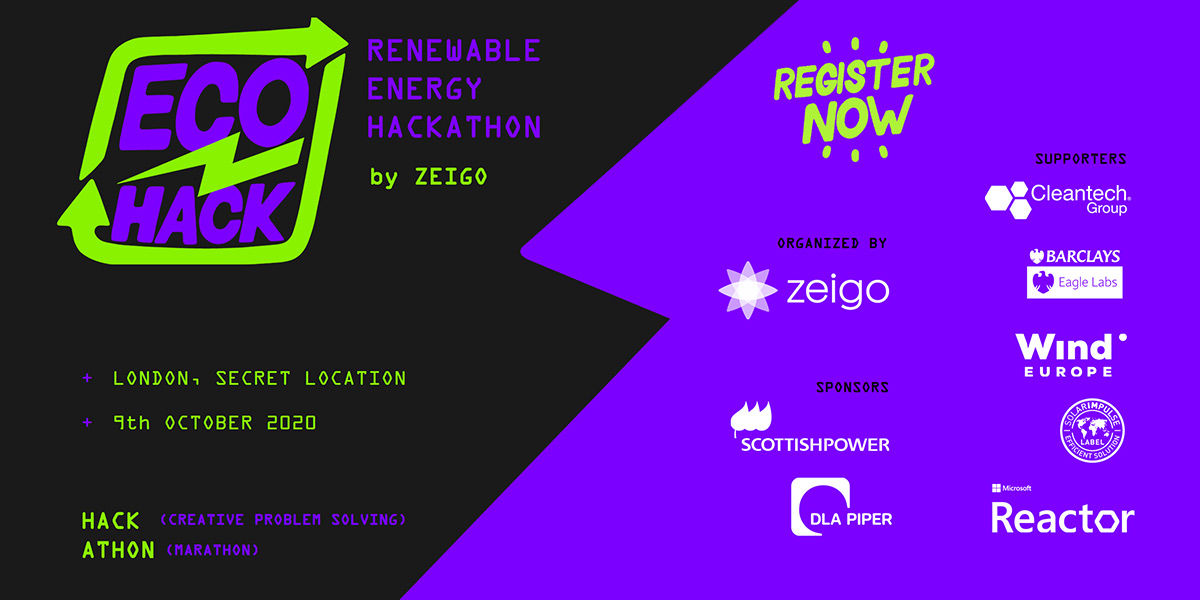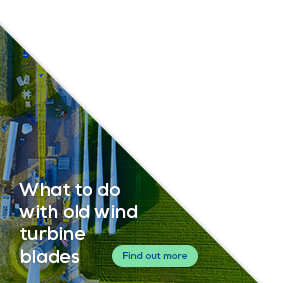WindEurope Bulletin
WindEurope Bulletin September 2020
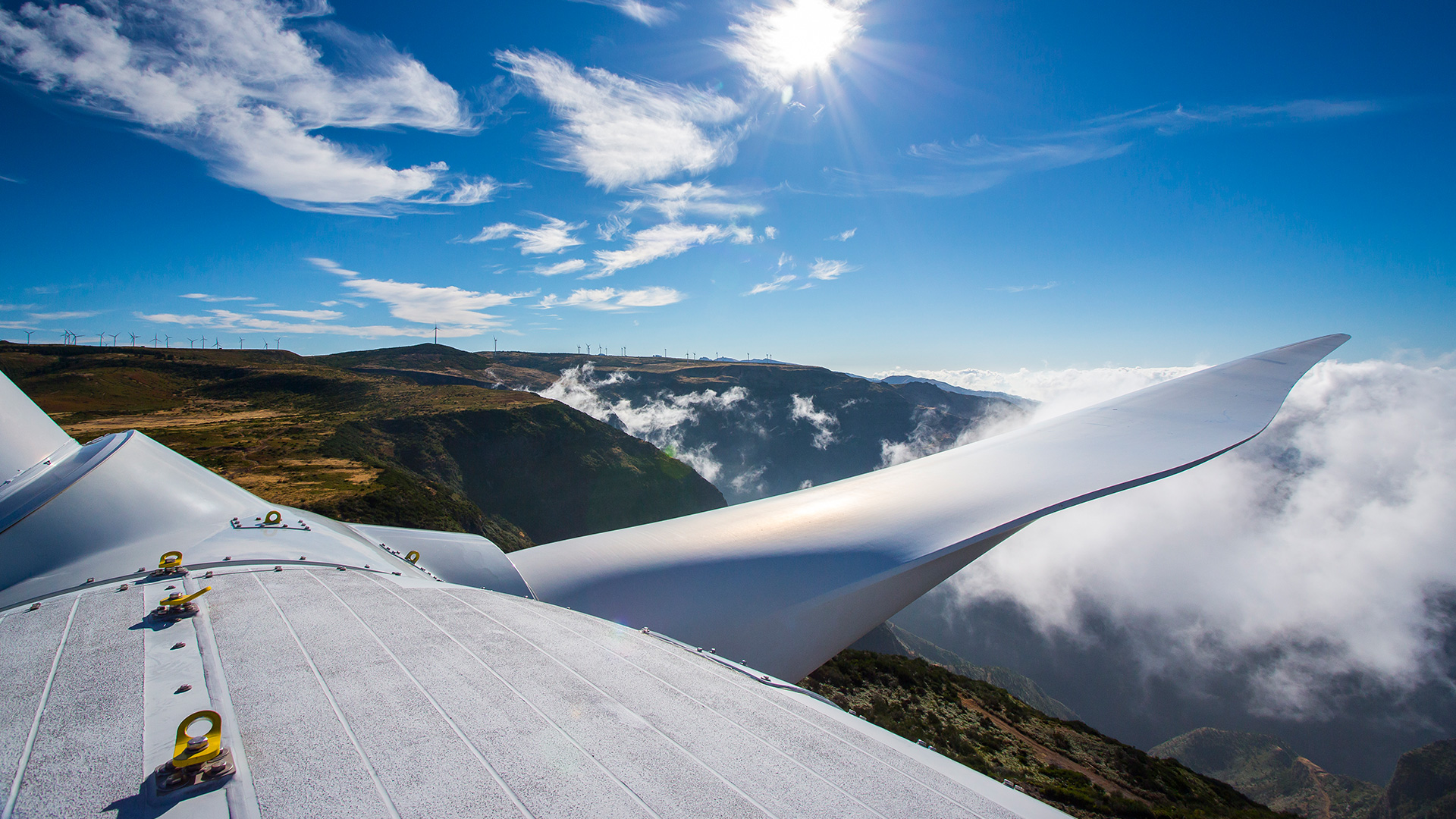
2 September 2020
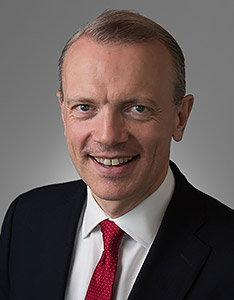
Giles Dickson
CEO Foreword
Dear WindEurope Member,
Autumn 2020 is a significant “start of term” for our industry and association.
Governments in Europe have now finalised their National Energy & Climate Plans (NECPs) for 2030. On paper the numbers are OK. The commitments add up to 33% renewable energy by 2030, slightly higher than the EU target, with significant increase in onshore and offshore wind. But the Plans are less good on how countries are actually going to deliver their commitments. Some have clear auction plans, others don’t. Above all the Plans say little about how Governments are going to deliver the simpler permitting systems that are needed to build the new wind farms. You can read our analysis of the NECPs further below.
The autumn will also see the EU Commission propose a more ambitious climate target for 2030. The current goal is to cut CO2 emissions by 40% on 1990 levels. The Commission want to raise that to 50-55% – to give the EU a chance of delivering the “climate neutrality” by 2050 it has now committed to.
Some of you may have seen the report we published in July on the impact of COVID-19 on our industry. It shows existing wind farms have performed well during the crisis, and that wind was 17% of Europe’s electricity in H1. H1 installations held up better than we might have feared at 5 GW. And H1 saw €14bn of new investments for 6 GW of new capacity, though €11bn of this was large offshore projects; new onshore investments were down on H1 2019.
Later this month we will publish our annual Flagship Report which will focus on wind and economic recovery – and how wind energy can make the green recovery work for communities in terms of jobs, growth, and competitiveness. We will present it in a new “Sofa Talks” webinar at the end of the month – watch out for the date.
In November we are then holding a high-level online event on the critical importance of onshore wind in delivering the European Green Deal. The benefits and importance of onshore wind are also the focus of a new WindEurope infographic we have published this week. Do share it with people.
Also this autumn …
- Our online End-of-Life Issues & Strategies seminar will take place on 18-20 November.
- WindEnergy Hamburg will take place on 1-4 December.
- The annual RE-Source conference on PPAs will be on 9-11 December.
You can find out more about these events in the rest of the Bulletin below.
Finally …
- We welcome Toni Volpe of Falck Renewables to the WindEurope Board following his election at the General Assembly in June. The Assembly also re-elected to the Board WindDenmark, AEE, VDMA, InnoEnergy, Green Investment Group and the DTU;
- At our next Board meeting on 21 September we will elect a new Chair and Vice-Chair of WindEurope. We thank Gunnar Groebler and Tony Adam for their excellent stewardship of our Association over the last 18 months. I am sure many of you will echo my thanks to them in the weeks ahead; and
- We have activated the WindEurope Instagram account. There’ll be a beautiful and often informative photo and image posted each day. Do “follow” us! And please like and share the pictures.
I wish you an enjoyable read.
Take care,

Giles Dickson
Highlight
All you need to know about onshore wind: our infographic
We all know about the huge expansion of offshore wind envisaged in Europe. And that’s great. But the EU wants onshore wind to grow even more.
Some governments worry about public opinion. We say look at the polls: over 70% consistently support more onshore wind. And crucially, look at the benefits: local jobs, revenue for the town hall and community, cheap energy, clean air and more.
But it’s amazing how few people know about these benefits. So we’ve produced this new infographic to tell the story. It spells out the arguments one by one. It sets out the key facts and figures. It dispels myths. It will help us convince people. Please use it.
And if you want glossy hard copies let us know!
Market Intelligence Spotlight
New WindEurope report on the Impact of COVID-19 on Europe’s wind sector
The latest WindEurope publication “The Impact of COVID-19 on Europe’s wind sector” analyses how the ongoing pandemic affected new installations, auction schedules, financing and electricity production in the first half of 2020. While the wind industry experienced disruptions in the first semester, installation levels were comparable to previous years and financing for new wind farms reached €14.3bn. The wind industry is uniquely positioned to contribute to a future-proof economic recovery under the €750bn EU recovery plan, 30% of which will go to green investments.
Due to the ongoing COVID-19 pandemic, the wind industry supply chain experienced major disruptions in the first semester, particularly on the production and assembly of wind turbine components and imports of subcomponents, mainly from Asia. In response to national Government measures, European factories experienced temporary closures, especially in the most affected countries Italy and Spain. Other facilities had a reduction in the number of workers due to the implementation of social distancing, self-quarantine. The reduced free movement of people and goods impacted Operation and Maintenance services and the commissioning of onshore and offshore wind in Europe shows the new WindEurope publication “The impact of COVID-19 on Europe’s wind sector”.
“The first half of 2020 was anything but business as usual,” said Pierre Tardieu, Chief Policy Officer at WindEurope. “Europe implemented unprecedented measures to counter the health crisis which affected all areas of the economy. But wind remained resilient. Our turbines produced a record amount of electricity. National governments held competitive auctions. And our industry continued to build new wind farms applying strict health and safety protocols.”
Europe installed 5.1 GW in the first six months of 2020, 3.9 GW onshore and 1.2 GW offshore. Onshore installations were just over the average of the previous three years (3.7 GW). Offshore installations were lower than the three-year average (1.5 GW). Germany had the most onshore installations (587 MW) though remaining well below historic levels, followed by France (494 MW). For offshore wind the leader board looks different with UK having installed most new offshore capacity (483 MW), followed by Belgium (235 MW), the Netherlands (224 MW) and Germany (213 MW). Crucially, Europe needs to install 20 GW per year to stay on track for the European Green Deal. Although the second half of the year usually comes with more installations, reaching WindEurope’s initial 2020 forecast of 17.7 GW is now unlikely. WindEurope expects installations to fall short by around 20%.
COVID-19 also affected electricity demand and generation in the first semester. Electricity demand in most European countries dropped as much as 25% during the worst period (mid-March to mid-May). In this challenging context, with reduced electricity demand and lower supply from nuclear and gas, wind produced 241 TWh of electricity covering 17% of Europe’s electricity demand. Europe benefited from strong wind generation already before COVID-19 decreased energy consumption, in particular in February when wind met 24% of electricity demand.
“Wind energy remained a critical and reliable power supplier, ensuring energy security through these very challenging times,” Tardieu said. “This should give us the confidence to accelerate the urgent transition towards climate neutrality.”
For project financing, the economic fallout resulting from COVID-19 increased costs of debt in the short-term and came with strains in debt liquidity in the lower-rated states in Eastern and Southern Europe. Despite the challenging economic environment, the first half of 2020 saw a record €14.3bn raised for the financing of new wind farms. Offshore wind energy had a particularly strong half year with €11bn of the financing raised. Important projects to reach final investment decision were the 1.4 GW Hollandse Kust Zuid (The Netherlands) or the 1.1 GW Seagreen Alpha and Bravo (Scotland) as well as the French offshore wind farms Saint Brieuc and Fécamp. Onshore wind financing fell to €3.3bn from €4.9bn in the first half of 2019. The record in the financing of new wind energy projects is an encouraging trend. It demonstrates investor’s appetite in wind energy projects which offer reliable, long-term revenues.
“Investors doubled down on wind in the 1st semester in spite of very challenging economic conditions,” Tardieu added. “This is a clear signal: wind is the right bet to build back better. Investing in wind means creating jobs here in Europe, boosting economic activity, and building a more resilient energy system. Let’s make sure Europe’s massive recovery efforts now strengthen the wind value chain and accelerate the buildout of electricity grids and all the infrastructure we need to deliver climate neutrality.”
The European Council agreed on a €750bn recovery plan in line with the objectives of the Green Deal. 30% of all spending will be earmarked for green investments in electrification, renewables, storage, hydrogen production and other activities that will boost value chains and position Europe as a leader on green technologies and climate protection. To access the recovery fund, Member States need to submit National Recovery and Resilience Plans to the EU Commission by April 2021. The plans should set out investment and reform priorities in line with the long-term target of climate neutrality by 2050.
Policy News
NECP analysis: permitting problems still a major stumbling block
All 27 EU Member States have now submitted their National Energy and Climate Plans (NECPs) to the EU. WindEurope has analysed what those plans entail for wind energy deployment in Europe. The main hurdle remains permitting – many NECPs do not set out effective solutions to existing permitting bottlenecks.
“For the first time, the NECPs offer a long-term planning horizon with clear commitments in terms of auction schedules, volumes and incentives,” says WindEurope CEO, Giles Dickson. “The 2030 National Plans are the wind sector’s investment brochures. They allow banks and developers to plan future investments into wind. But the wind volumes in the NECPs remain purely academic if the policies to unlock these investments are not in place. The EU needs to push Member States to make the necessary improvements – especially in permitting.”
With regards to the share of renewables, the submitted NECPs would allow for 33% renewables in the final energy mix by 2030. The current EU target stands at 32%. Across the continent, Member States plan to increase their wind installations, both onshore and offshore. If the NECP pledges are fulfilled, Europe will have installed 339 GW of wind capacity by 2030, 268 GW onshore and 71 GW offshore. This represents a significant increase in wind installations from 169 GW today.
“Most NECPs include a decent level of visibility to future auction schedules,” adds Dickson. “Especially Germany, Denmark, France and the Netherlands offer good long-term visibility. But we need to install more wind to be on track with the Green Deal. In 2019 we installed 15.4 GW. But we need to install at least 20 GW each year to stay on track for the Green Deal. The climate emergency and electrification targets make the installation of wind energy an absolute necessity.”
The main hurdle in the NECPs are the permitting regulations. The vast majority of countries do not mention what measures will be taken to ease permitting for new and repowered projects. Among them, major markets like Germany, where auctions continue to be heavily undersubscribed due to permitting bottlenecks.
“Wind energy is the backbone in delivering both a green recovery and decarbonisation by 2050. If the EU does not get permitting of new wind farm right as soon as possible, Europe will miss its energy and climate targets badly. Easing permitting is almost completely missing in the NECPs submitted. Europe needs to sort this out urgently. Unjustified set-back rules need to be removed. Environmental assessment procedures for new projects need to be streamlined and clarified. Approved projects need more legal certainty. It is not acceptable that simple onshore wind projects take 5 years and longer to be permitted”, says Giles Dickson.
Members’ news
Port of Gdynia sets its sights on becoming Poland’s leading offshore wind port
The Port of Gdynia Authority S.A. has joined WindEurope and is setting its sights on becoming the leading port in Poland’s future offshore wind industry.
In its National Energy and Climate Plan (NECP) Poland identified offshore wind as one of key technologies to meet its goals for renewable energy for 2030. It is also a strategic project in the draft of Poland’s Energy Policy until 2040. It will help diversifying the Polish national power generation structure that today heavily depends on coal.
Poland’s expansion targets for offshore wind are ambitious. Poland doesn’t yet have any offshore wind farms. But by 2030 they aim to have installed 3.8 GW of offshore wind – with 10 GW of new capacity awarded CfDs by then. And by 2050 they want a massive 28 GW, which would make Poland the largest operator of offshore wind in the Baltic Sea.
Polish offshore wind farms in the Baltic Sea are set to play a key role in Poland’s energy transition to a low-carbon economy. Offshore wind farms will be the main driving force behind the development of green energy in Poland in the next two decades, contributing to the country’s energy security and speeding up Poland’s decarbonisation.
The Port of Gdynia specialises in handling general cargo, based on the well-developed network of multimodal connections including hinterland, regular Short Sea Shipping Lines as well as ferry connections. As such, the Port of Gdynia is an important link in the Corridor VI of the Trans-European Transport Network (TEN-T).
The seaport in Gdynia is the closest port (from the east) to the maritime areas in the Polish coastal zone intended for the location of offshore wind farms. In addition, the Port of Gdynia conducts research aimed at the development of the offshore sector, in particular regarding the possibility of establishing a back-up facility for servicing elements for the construction of offshore wind farms. The port actively participates in the creation of local facilities covering the communes of Kosakowo, Rumia and the city and commune of Gdynia.
Vestas first to reach 100 GW of wind turbines under service, paving the way for more sustainable, cost-competitive, and reliable energy
© Vestas
Achieving 100 GW of wind turbines under service is both a testament to Vestas’ leading position within wind service solutions and the speed at which the installed capacity of wind energy and renewables is growing in the global energy system.
“Vestas has led the energy transition for the past four decades. Our current portfolio of 115 GW installations and 100 GW under service shows how far Vestas and wind energy has come”, said Henrik Andersen, Vestas President and CEO. “As the current global pandemic has demonstrated, renewables are fast becoming a critical component of the global energy system as well as an important element in the green recovery of the world’s economies. To this end, the service business plays an increasingly important role in ensuring a balanced and stable supply of energy to communities all over the world and in supporting a growing number of jobs globally.”
With 100 GW under service, Vestas helps remove over a hundred million tonnes of CO2 every year from the atmosphere by providing reliable, sustainable and cost-effective renewable energy, meeting global energy needs without compromising our planet’s wellbeing. Based on the global average of electricity usage, 100 GW of wind energy saves around 134 million tonnes of CO2 annually. This is equivalent to removing more than 90 million passenger cars from the road every year.
The successful proliferation of wind energy and other renewables are, however, creating new demands for the industry, and the successful transition away from fossil fuels requires equipment to deliver as expected and energy systems to remain reliable. To ensure that turbine blades keep turning and energy systems are running with an increasingly large share of renewables, Vestas is at the forefront of the digital transformation, data collection and analysis. More than 140 times a day, 27,000 turbines under Vestas service thus send performance data to Vestas’ Performance and Diagnostics Centre. Through the effective use of digital tools and advanced forecasting systems, Vestas is able to deliver outstanding service and maintenance solutions both on turbine and system level as well as advanced digital analytics applications through its US based subsidiary, Utopus Insights.
Events
ETIPWind Workshop: R&I to deliver 450 GW of offshore wind
When: 14 September
Where: Online
In this workshop, experts from the industry and the research community will discuss the technology pathways to deliver this 450 GW of offshore wind in Europe. Together with the participants they will identify how to scale-up offshore technology and successfully install and exploit these large volumes of offshore wind. See here the agenda.
Call for abstracts now open for Electric City: 2021’s largest on- and offshore wind event
To counter climate change, we have embarked on a journey towards an electric future, powered by clean energy from wind and other renewables.
We are calling for abstracts on technologies, concepts, research, ideas and solutions that will help speed up this transition.
DEADLINE FOR ABSTRACTS: 23 October 2020
What is the scope?
We will cover onshore wind, offshore wind and the electrification of the wider energy system.
What kind of contributions are we looking for?
We are looking for concrete examples of already–implemented operational solutions, experience and feedback from the field, including real-world data, as well as innovative research, concepts and ideas, under the following headline topics:
- Onshore wind;
- Offshore wind;
- Electrifying the energy system
End-of-Life Issues and Strategies Seminar (EoLIS) 2020
When: 18-20 November
This year, EoLIS will be a 3-day event: On Day 1 we will explore how to unlock repowering in Europe. On Day 2 we will look at the business cases for lifetime extensions. And on Day 3 we will cover decommissioning and recycling.
High-level plenaries on every aspect of end-of-life issues – repowering, lifetime extension, decommissioning, recycling, etc. – will be followed by break-out sessions where you can deep dive further into the topics.
There will also be networking sessions every day between those involved in the operational and investment sides of the end-of-life conversation.
RE-Source 2020: connecting renewable energy buyers and sellers
When: 9-11 December
Where: Hotel Okura, Amsterdam
We know how important it is for corporate buyers and suppliers of renewable energy to continue to work together.
Whether as our traditional gathering at Hotel Okura in Amsterdam, a fully online event, or a hybrid event integrating in-person meetings and digital platforms, RE-Source 2020 will still be taking place.
Over the past 3 years, RE-Source has become a milestone for all of us working in the corporate sourcing of renewables. Our B2B matchmaking activities, deep dive breakout sessions and increasingly diverse buyer and supplier groups have made RE-Source an essential event.
Registrations will open soon – in the meantime, make sure to save the date!
60% of exhibition space already sold for WindEurope Electric City 2021: Europe’s largest on- and offshore wind energy event
When: 27-29 April 2021
Where: Copenhagen
The world is changing. Our business models are changing. And our business partners are changing too.
Electric City is WindEurope’s on- and offshore event in Copenhagen, specifically designed to put the wind industry at the centre of the energy transition.
Electric City is an enhanced version of the annual WindEurope conference and exhibition that you’ve been attending over the past 20 years.
What does this change mean for you?
It’s simple: not only will you get to meet all your colleagues and friends from onshore and offshore wind, you’ll also get to diversify your partnerships with new players from other sectors who want to do business with you.
Stands are selling out fast. Check out our stand prices here.
Here are just 4 reasons you can’t miss the Electric City event:
- This event will bring the wind industry together to make the most of the unprecedented window of opportunity we have.
- Literally everyone who is anyone in the wind industry will be there.
- But you’ll also get to meet the new partners with whom we build the new energy system.
- And you can do all of this at one event, in one place.
All the classic WindEurope event features will be there in Copenhagen: the Gala Dinner, the Members’ Reception, the stand parties, the product launches, the surprise announcements.
What’s unique is the sheer return on investment this event brings: not only do you get to meet the entire value chain under one roof, but every euro put into this event goes back into WindEurope’s campaigning work as the voice of the wind industry, fighting for your interests on a national and international level.
Partnered Events
This October: join ECOHACK, the PPA Hackathon!
When: 9 October
Where: London
This October, Zeigo will host ECOHACK® – the renewable energy hackathon that aims to democratise Power Purchase Agreements.
In partnership with Scottish Power and DLA Piper, the hackathon will challenge participants to create digital solutions that enable groups of businesses to contract energy directly from wind and solar farms.
The event will unify those interested in creating smart energy solutions to increase accessibility to the renewable energy market. Winners will be invited to showcase their innovative project to the industry’s key players in a webinar organised with RE100 members
Hybrid Renewables Conference: where wind, solar and storage combine to drive forward the next generation of renewables
When: 8 October, 2020
Where: Online
As of today, there are more than 25 hybrid projects worldwide (in all stages of development), amounting to 8 GW of wind, 5.7 GW of solar and 120 MW of storage. And this is just the start… This October, WindEurope has joined SolarPlaza as the strategic partner at the upcoming Hybrid Renewables Conference.
This event will gather dozens of high-level speakers including public decision makers and experts from the field of renewable energy, with over 200 participants ranging from international and local stakeholders, investors and project developers, to EPC’s IPP’s and manufacturers.
The programme will feature topics including:
- Hybrid Renewable Power Plants
- Siting Hybrid Projects
- Hybridization of operational plants
- Alternative hybrid structures

